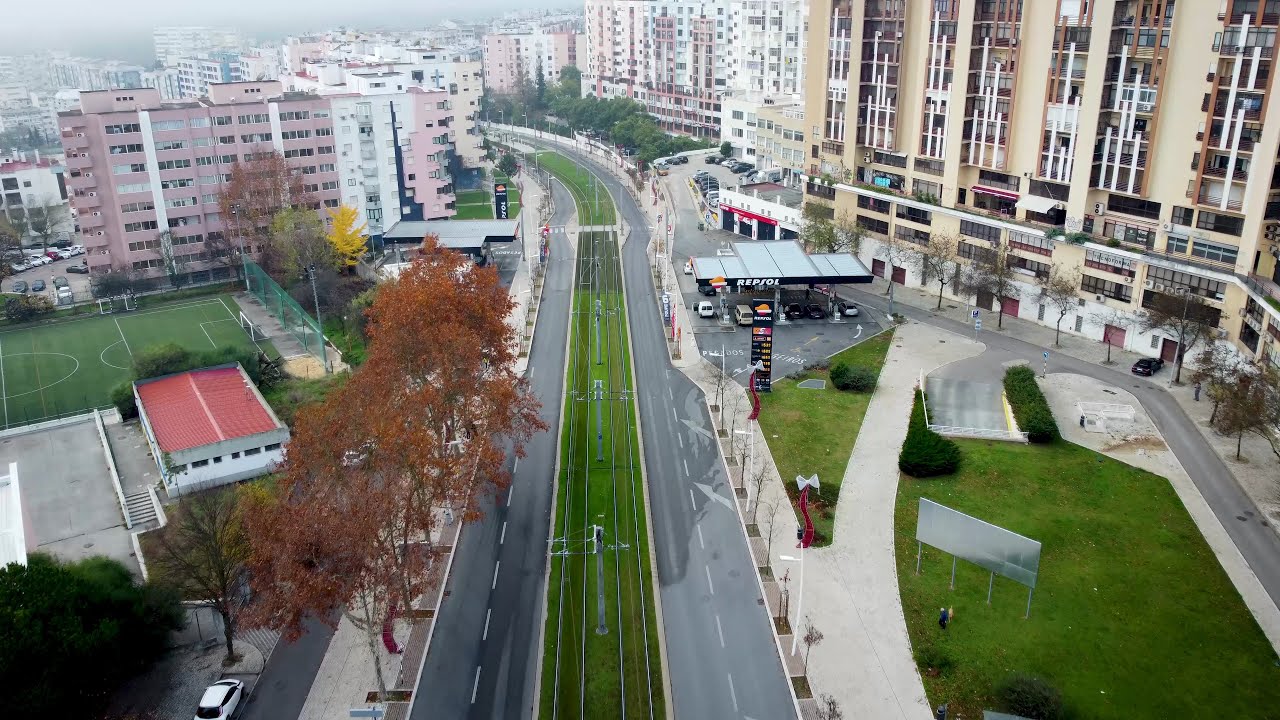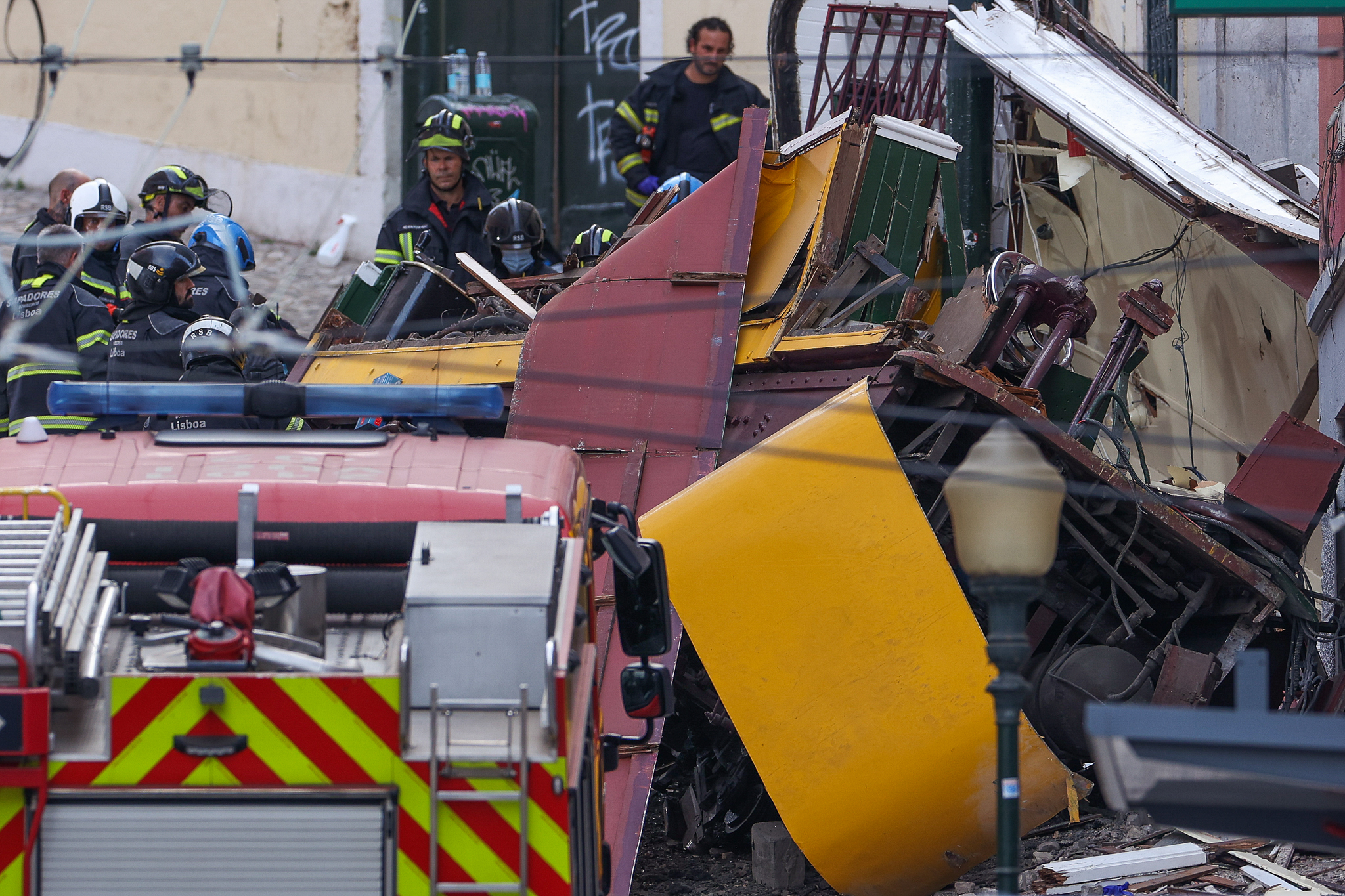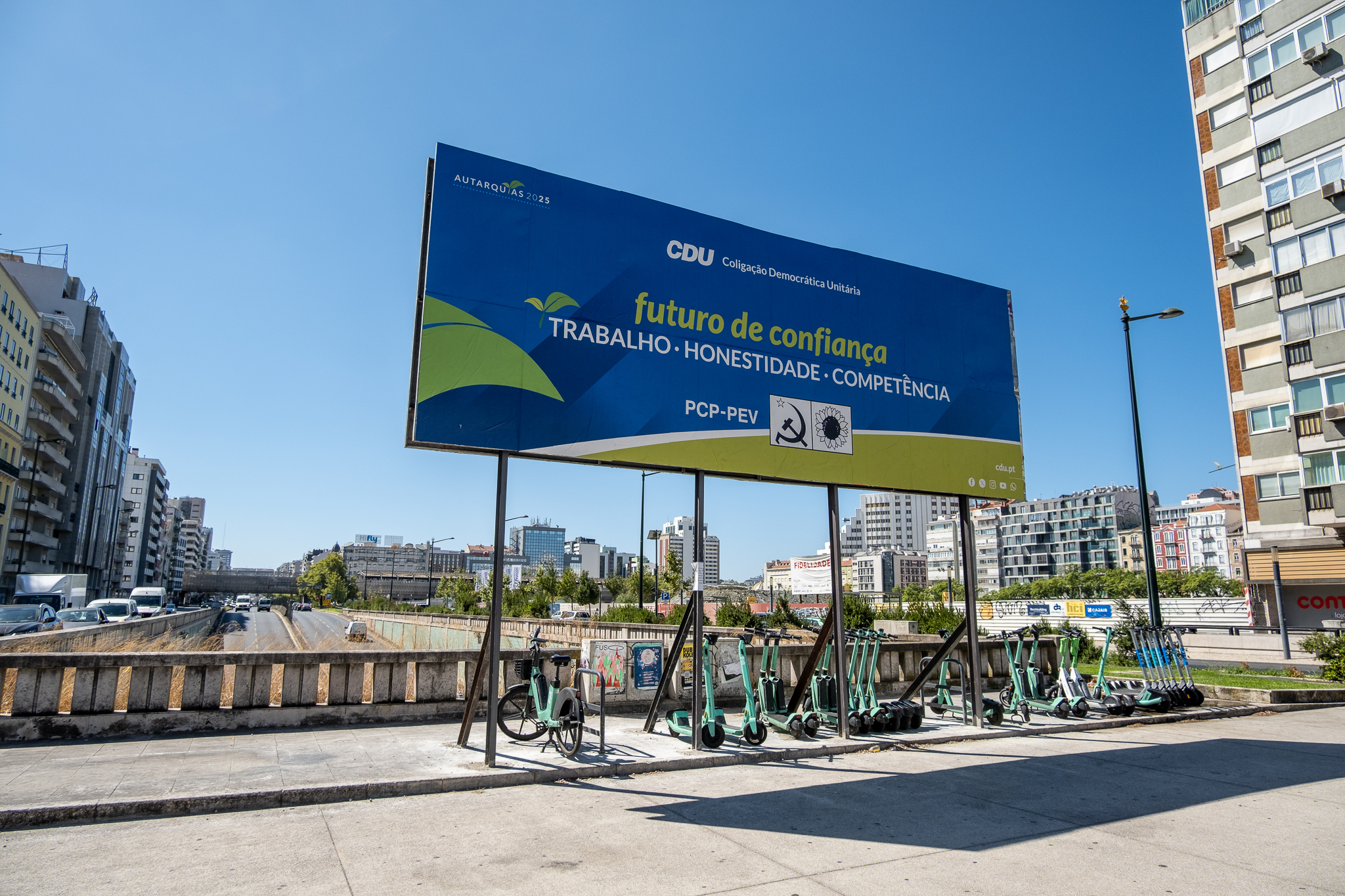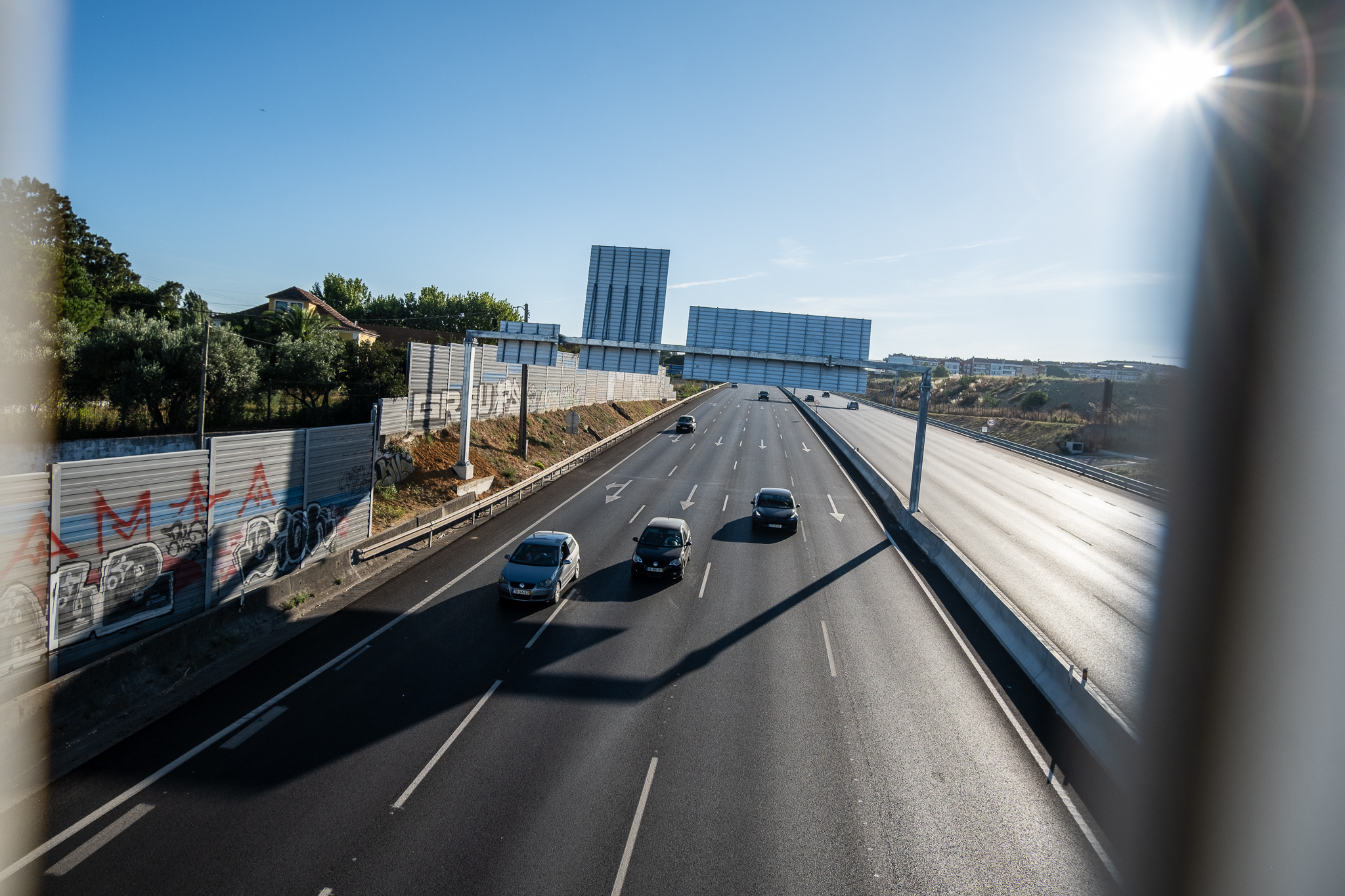MetroPublicNet is a research project to think about and define the basis of a possible Metropolitan Public Space Network in the Lisbon metropolitan area.

To think the public space at the scale of the Lisbon metropolitan area and build the foundations for a Metropolitan Public Space Network are objectives of the MetroPublicNetMetroPublicNet is a research project being developed by the Faculty of Architecture of Lisbon. On a sunny morning, March 14th, MetroPublicNet opened itself to the community and conducted a walk through some of these public spaces in Lisbon.
The tour was promoted between MetroPublicNet researchers and the Lisbon Urban Information Center (CIUL), and counted with the participation of a dozen people, who registered in advance. It was a moment of interconnection between academia and civil societyThis visit allowed the latter to get in touch not only with the research project that is being developed, but also with other looks and perspectives on spaces that they know or perhaps do not know. The visit started in the Lisbon vineyard, overlooking the 2ª Circular and the airport, followed by a horticultural park in Vale de Chelas, went to the mouth of the Trancão river, where the Parque Tejo is being finished, started in the Expo'98, and finished in the Parque Ribeirinho Oriente, built in Braço de Prata at the boon of a new housing complex.

Led by researchers João Rafael Santos and Maria Matos Silva, from the Faculty of Architecture of Lisbon, the MetroPublicNet propose to "build the foundation of a Metropolitan Public Space Network as a support for the robust, decarbonized and cohesive city"as can be read in the project description, available online. The idea of this network is to think of the city beyond the municipal boundaries, that is, as an interconnected metropolis. The research project began in March 2021 and will run for three years, ending in 2024 with the publishing books and brochures with recommendations, policy guidelines and possible scenarios for a potential Metropolitan Public Space Network.

"We want to understand how in the last 20 years, after the 25th of April, the Lisbon metropolitan area was transformed from the point of view of public space".explained João Rafael Santos at the beginning of the tour, highlighting that this time space was marked "by a huge diversity and quantity of interventions in the public space". The MetroPublicNet team is mapping these projects, with a view to creating a comprehensive, online, open-access archive of street, square and waterfront redevelopments, green space or water management infrastructures, new public transport interchanges, parking organization, or interventions in urban areas of illegal origin. "To give you an idea, we have already mapped more than 1000 interventions. The municipalities are the great promoters of these requalifications".pointed out the architecture professor. This map and database of public space projects will be the central resource of MetroPublicNet in terms of data collection and systematization.

Analyze what exists, think about the future
Taking as a starting point the experience of public space qualification in the Lisbon metropolitan area since 1998, MetroPublicNet will an "critical reading of the multiple interventions, their logics, objectives and results"looking for the basis for a future Metropolitan Network of Public SpaceWe believe that this metropolitan perspective "can provide more integrated, robust and cohesive responses to the challenges of environmental resilience, low-carbon mobility and territorial cohesion" - as can be read in the information available online about the project. Incidentally, "in extensive territories confronted with problems of ecological fragmentation, urban dispersion and inefficient mobility, as is the case of AML, a metropolitan vision is needed to articulate various systems and promote a more balanced distribution of resources and opportunities. This scale is fundamental to coherently structure synergistic, continuous and connected networks, such as those of green infrastructure, transportation and urban equipment".
"The project's time frame (1998-2020) and its spatial focus (Lisbon metropolitan area) provide a field of great richness and diversity of experiences"the research team further perspective. "It's about a period during which a progressive transition from a metropolitan logic based on urban expansion to a model oriented towards greater compactness and based on urban regeneration was evident; on the other hand, amL has been a a real laboratory for the application of various urban development policiesThe need for a critical reading and interpretation for future adjustments and recommendations arises.

"We think that in the Lisbon metropolitan area there can be something more than a multiplication of projects. We can think on a larger scale, planning in an integrated way and finding funding together."João points out. MetroPublicNet focuses on three perspectives in its analysis and mapping of public space: the blue and green infrastructuressuch as green corridors, riverfronts, urban agriculture spaces, or flood management projects; the walkability and active mobilitypromoted through urban planning oriented towards public transport and the promotion of accessible pedestrian and cycling paths; and neighborhood connection and cohesionby promoting multifunctionality, commercial vitality, and social interaction.
Beyond the City: The Metropolis
In fact, according to João, Expo'98 opened the way to new types of public space that can now be worked on. "We can question whether an area with an agricultural component is a public space. Can public space, besides recreation and leisure, also have a productive dimension?" On the tour on which MetroPublicNet took us around Lisbon, we visited the city's wine park, where that question takes on another frame.
With an area of two hectares, the Lisbon Wine Park is municipal but the management is in the hands of Santos Lima Housewho tends the vineyards and collects the wine. In mid-March, when this visit took place, spring was already beginning to "pull" to sheets. "Every day we see new leaves popping up. It makes you want to stand here and look at it pull it up."joked a representative of the House. The constraints of the terrain and climate of that space are reflected in the characteristics of the wine that is obtained from the harvest - from the stones that remain in the space, to the wind "that wards off disease" (we are in a windy area), to the "summer heat that goes to work on the grape when it is ripe" (it is an area with a lot of sun exposure). "This was a very battered lot"he reminds us, explaining that Casa Santos Lima is responsible for the maintenance of the entire park. Despite human intervention, we also let nature intervene, because we want to attract biodiversity to the place and because it is good to have some weeds. "the vine, being smart, needs competition for its roots to go deeper"says the specialist."Our interest here is not economic, it is positioning"he said. Despite giving eight tons a year, the Lisbon vineyard serves to bring Casa Santos Lima closer to the city. The park is generally closed to the public, but is open for visits by schools and other groups.




The tour continued to the Chelas Valleywhere one of the many municipal horticultural parks operates. At this point, a technician from the Lisbon City Hall tells us about the distinct role of the various horticultural parks, some more for leisure, others with a social aspect, of to support disadvantaged families that may have in the production of food a way to save on the supermarket bill or even to make some income - this is the case of this park in Chelas. "Since this is a more socially disadvantaged area, this park has a social value and allows a complement to the families' economy"he described. There was talk about "heavy maintenance" of these infrastructures, where, for example, water is free, inviting abuse. In addition to raising awareness about the use of this resource, a double flow system is being tested in Chelas: a stronger flow at the beginning and end of the day, to force irrigation at these times, and a weaker flow at other times. In the management of the horticultural farms and the relationship with the gardeners, some sensitivity is needed. At the same time, the grower is given a lot of freedom. "They can plant anything but trees."


"The municipal horticultural parks project started in 2007 because we really wanted to boost agriculture in urban environments"explained the municipal technician. The first parks were in Quinta da Granja, in Benfica, and in the Amnesty International Garden, in Campolide; over time, it has been sought to install urban agriculture "in the middle of the city, in gardens and parks where people are already"to arouse the curiosity of the population. "for children it is very important to see where the fruits and vegetables come from". "In the city as a whole, there are 23 parks today. The average age of the gardeners is around 58. A third are women, close to half are working population, 26% are unemployed." The plots are assigned by contest and having as main criterion the distance from people's residence to the park, and this procedure is being reviewed, since there are endless waiting lists in some places. There is a symbolic annual fee, and in the horticultural parks with a social character there is a discount of 80%.
The trip ended on the waterfront: near the mouth of the Trancão River, one could see the progress of the works that, in connection with the World Youth Daywill complete the Parque Tejo, which was started for Expo'98. "We finally have here the completion of the Parque das Nações project. We have finally arrived in the municipality of Loures." The two banks - the one in Lisbon and the one in Loures - will finally be joined by a cyclopedestrian bridge that will make it possible to reach, on foot or by bicycle, an area of the river that is currently inaccessible and that will have some footbridges (which will allow us to reach Vila Franca de Xira). In this part of the visit, we talked about the soil decontamination that had to be done at the Expo and now. "This area is a jelly on top of quicksand. We know very well where what is, where the chemicals are. Studies on these environmental liabilities are not lacking, but what comes next is often lacking - the architectural designs."was explained by the MetroPublicNet team. "Technically, if there is funding, we can get everything done to address these liabilities. If we have all the money in the world, we can take this garbage elsewhere." In other words, the regeneration of public space need not be put on hold by the existence of contaminated soil, and this issue can be solved one way or another, depending - as with much else - on the investment capacity one has.


Sometimes the solutions to such chemicals can lie in Nature-based solutions. In fact, the mouth of the Trancão is also a large salt marsh. "Salt marshes are no longer something that bothers us and that we are disgusted with. We can create more marshes for plants to absorb the pollutants."they tell us. "And those marshes can be part of our public space"as the new footbridges being created in Loures will show. "The city is no longer restricted to its administrative boundaries and by natural barriers such as the rivers. It is important that we are able to travel along these riverfronts, enjoy them to their fullest extent, and open up new landscapes."as was done at the time of Expo'98 - which opened up "a landscape that was hidden behind industries and containers". "And from the moment these things are more connected, we stop being in this duality of center and peripheries"MetroPublicNet researchers point out.


We didn't technically leave Lisbon, and went in the direction of Braço de Prata; we met here Oriente Riverfront Park or, at least, the first phase of it - an unused area by the river was rehabilitated, in the wake of a new real estate investment and the urban spirit of Parque das Nações. Trees were planted, small woods were created, benches and other furniture were placed, grassy clearings were designed, and containers were installed, which should soon be granted a concession for a cafeteria, a library, and a bicycle rental service. "It is a very windy area and close to the river, we had to choose species that are very well adapted to this specific climate"said one of the architects who authored the project. "We also sought to create a space that could be self-sustaining in the future, with little watering and plants that would hold up well in drought."
Public space in the Lisbon metropolitan area
The Lisbon metropolitan area (amL) shares with many European metropolises territorial patterns associated with rapid, intensive and discontinuous growth processes in the second half of the 20th century, which resulted in problematic situations of urban fragmentation and dispersion. On the other hand, it also shares a trend of structural change in its territorial dynamics, with a reduction in the rate of consumption of rustic soil and open spaces by urbanization processes, along with an increase in urban and territorial requalification and regeneration projects, particularly in the last 20 years.
Urban policies have followed this trend not only through normative planning tools - with greater restriction on urban sprawl - but also through the active promotion of urban projects framed within sustainable development objectives and in response to emerging societal challenges. In line with the policy agendas of the European Union and its funding frameworks, and with the involvement of various levels of government and diverse sectoral actors, many public space projects have been implemented in amL with a rationale focused on promoting environmental resilience, sustainable mobility, and social inclusion.
In this framework, municipalities play a central role in the construction of urban intervention programs in areas of heritage interest, areas of environmental value and the promotion of active mobility. The most recent projects have been implemented in more heterogeneous places, external to the historic centers and often perceived as peripheral, recognizing the metropolitan diversity and the need to foster territorial cohesion and a balanced urban development.

MetroPublicNet will continue to make visits and other actions open to the population. You can follow the work on the project's websiteand also in the social networks Facebook, Instagram e LinkedIn. The research project also seeks to contribute to the national and European debate on territorial policy and the metropolitan scale, and wants to be proactive in designing public space through policy recommendations and proposals for intervention. At least two books and three brochures will be published.
For now, you can get to know one of outputs of the project, which was presented in late 2022 when there were multiple floods in the urban environment - a a set of reflections on the role of public space in promoting the necessary adaptation of urban space to the water cycle and, in particular, to extreme precipitation events, accompanied by five action principles and a selection of eighteen projects implemented in amL.











